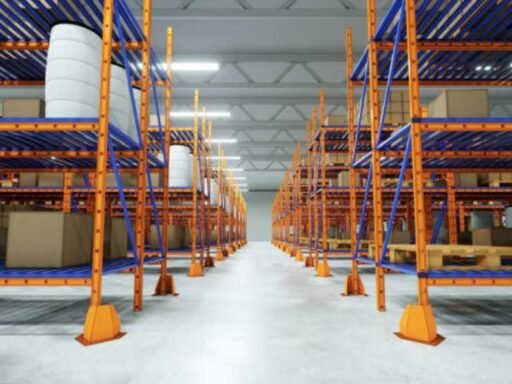The building surveying profession in Australia is undergoing significant transformation. As a critical component of the construction industry, building surveyors ensure that structures comply with regulations and standards, safeguarding public safety and enhancing the quality of the built environment. Recent developments, including technological advancements and evolving regulatory frameworks, are reshaping the landscape of building surveying. According to the Australian Bureau of Statistics, the construction industry contributes approximately 9% to the nation’s GDP, underscoring the importance of building surveyors in maintaining industry standards and driving innovation.
In recent years, the role of building surveyors has expanded beyond traditional inspection and compliance tasks. They are now integral to the planning and execution of sustainable and smart building projects. This shift is driven by the growing emphasis on environmental sustainability and the adoption of smart technologies in construction. As the industry evolves, building surveyors must adapt to new challenges and opportunities, requiring continuous professional development and a proactive approach to learning.
The future of building surveying in Australia is promising, with numerous opportunities for growth and innovation. However, it also presents challenges that require strategic planning and collaboration among industry stakeholders. By staying abreast of emerging trends and embracing new technologies, building surveyors can continue to play a vital role in shaping the built environment and ensuring the safety and quality of construction projects.
Sustainability and Smart Buildings
Sustainability is a fundamental aspect of modern construction. Building surveyors are at the forefront of this movement, ensuring that new projects adhere to sustainable practices and meet stringent environmental standards. This involves assessing the environmental impact of construction materials, energy efficiency, and waste management practices. The rise of green building certifications, such as Green Star and NABERS, highlights the growing importance of sustainability in the industry.
Smart buildings, equipped with advanced technologies for monitoring and controlling building systems, are another emerging trend. These buildings use sensors, automation, and data analytics to optimise energy use, enhance occupant comfort, and improve operational efficiency. Building surveyors play a crucial role in the design and implementation of smart building systems, ensuring that they comply with regulatory requirements and industry standards.
The integration of sustainability and smart technologies in construction is transforming the skills required for building surveyors. They must now possess a deep understanding of environmental science, data analytics, and smart technologies. Continuous professional development and interdisciplinary collaboration are essential for building surveyors to stay relevant and effective in this rapidly evolving field.
Technological Advancements
Technological advancements are revolutionising the building surveying profession. Building Information Modelling (BIM) is one such innovation that has significantly impacted the industry. BIM allows for the creation of detailed 3D models of buildings, facilitating better planning, design, and construction management. Building surveyors use BIM to conduct virtual inspections, identify potential issues early, and ensure compliance with regulations.
Drones are another game-changer in building surveying. Equipped with high-resolution cameras and sensors, drones can capture detailed images and data from hard-to-reach areas, such as rooftops and tall structures. This technology enhances the accuracy and efficiency of inspections, reducing the need for manual labour and minimising safety risks. Drones are particularly useful for large-scale projects and complex structures.
Artificial Intelligence (AI) is also making its mark on building surveying. AI-driven inspection tools can analyse vast amounts of data, identify patterns, and predict potential issues before they become critical. These tools enhance the decision-making process, allowing building surveyors to provide more accurate and timely recommendations. The integration of AI in building surveying is still in its early stages, but its potential to transform the profession is immense.

Navigating Regulatory Changes
The regulatory landscape for building surveying in Australia is constantly evolving. Recent changes in building codes and standards reflect the industry’s commitment to improving safety, quality, and sustainability. Building surveyors must stay informed about these changes and understand their implications for construction projects. This requires continuous education and collaboration with regulatory bodies and industry associations.
One significant regulatory change is the introduction of the National Construction Code (NCC) 2019, which includes new requirements for energy efficiency, accessibility, and fire safety. These changes have a direct impact on building surveyors, who must ensure that new projects comply with the updated standards. The NCC 2019 also emphasises the importance of performance-based solutions, encouraging innovation and flexibility in meeting regulatory requirements.
Navigating regulatory changes can be challenging, but it also presents opportunities for building surveyors to demonstrate their expertise and value. By staying up-to-date with the latest regulations and proactively addressing compliance issues, building surveyors can help clients navigate the complexities of the construction process and achieve successful project outcomes.
Unique Challenges for Australian Building Surveyors
Building surveyors in Australia face unique challenges that require specialised knowledge and skills. One such challenge is the complexity of local regulations, which can vary significantly between states and territories. This requires building surveyors to have a thorough understanding of regional requirements and the ability to navigate different regulatory frameworks effectively.
Skills shortages are another pressing issue in the building surveying profession. The demand for qualified building surveyors is high, but the supply of skilled professionals is limited. This shortage is exacerbated by the ageing workforce and the need for specialised skills in areas such as sustainability and smart technologies. Addressing this challenge requires a concerted effort to attract and retain talent, as well as investment in education and training programs.
Evolving client expectations also pose a challenge for building surveyors. Clients increasingly demand faster project approvals, higher quality standards, and greater transparency in the construction process. Building surveyors must adapt to these expectations by leveraging technology, improving communication, and delivering value-added services. This requires a customer-centric approach and a commitment to continuous improvement.
The Role of Education and Continuous Learning
Education and continuous learning are critical for building surveyors to stay relevant and effective in a rapidly changing industry. A strong educational foundation provides the knowledge and skills necessary to navigate the complexities of building surveying. However, formal education is just the beginning. Building surveyors must also engage in lifelong learning to keep pace with emerging trends and technologies.
Kyrillos Ghaly, the Director at Building Certifiers Pty Ltd, exemplifies the importance of continuous professional development. After initially studying physiotherapy, Kyrillos discovered his passion for the property and construction industry and pursued further education in building and construction. His commitment to lifelong learning, including completing a Diploma and Graduate Certificate in Building Surveying, has enabled him to excel in his role and lead his team effectively.
Professional associations, such as the Australian Institute of Building Surveyors and the Association of Australian Certifiers, play a vital role in supporting continuous learning. These organisations offer training programs, workshops, and networking opportunities that help building surveyors stay informed about industry developments and enhance their skills. By actively participating in these associations, building surveyors can stay ahead of the curve and contribute to the advancement of the profession.
Interdisciplinary Approaches
Interdisciplinary collaboration is becoming increasingly important in building surveying. By integrating knowledge and methodologies from other fields, building surveyors can address complex challenges more effectively and drive innovation in the industry. This approach requires a willingness to learn from other disciplines and work collaboratively with professionals from diverse backgrounds.
Doug Hilton, the Chief Executive of CSIRO, is a prime example of the benefits of interdisciplinary collaboration. With a background in molecular and cellular biology, Hilton has led CSIRO in integrating scientific methodologies into various fields, including building surveying. His work demonstrates how scientific principles can be applied to improve building performance, sustainability, and safety.
Building surveyors can learn valuable lessons from other fields, such as engineering, environmental science, and data analytics. By adopting interdisciplinary approaches, they can enhance their problem-solving capabilities and deliver more comprehensive solutions for clients. This requires a commitment to continuous learning and a proactive approach to collaboration.
Innovative Solutions from Industry Leaders
Industry leaders are driving innovation in building surveying by developing new technologies and solutions that enhance project collaboration and information management. One such leader is Leigh Jasper, the CEO and co-founder of Aconex. Aconex provides web-based collaboration technologies that streamline project information and process management, improving efficiency and reducing errors.
Aconex’s platform allows project teams to share and manage documents, track progress, and communicate in real-time. This enhances transparency and accountability, ensuring that all stakeholders are on the same page. The platform’s integration with Building Information Modelling (BIM) further enhances its capabilities, allowing for seamless collaboration and data sharing.
The impact of Aconex’s innovations on building surveying is significant. By improving project collaboration and information management, building surveyors can conduct more accurate and efficient inspections, identify potential issues early, and ensure compliance with regulations. This ultimately leads to better project outcomes and higher quality standards in the construction industry.
Preparing for the Future
The future of building surveying in Australia is filled with opportunities and challenges. To thrive in this dynamic environment, building surveyors must embrace change, invest in continuous learning, and leverage new technologies. By staying informed about industry trends and regulatory changes, they can provide valuable insights and solutions for clients.
Collaboration and interdisciplinary approaches will be key to addressing complex challenges and driving innovation in building surveying. By working together with professionals from diverse backgrounds, building surveyors can enhance their problem-solving capabilities and deliver more comprehensive solutions. This requires a commitment to learning from other fields and a proactive approach to collaboration.
Ultimately, the success of building surveyors in the future will depend on their ability to adapt to change and continuously improve their skills and knowledge. By embracing new technologies, staying informed about industry developments, and fostering a culture of continuous learning, building surveyors can play a vital role in shaping the built environment and ensuring the safety and quality of construction projects in Australia.





